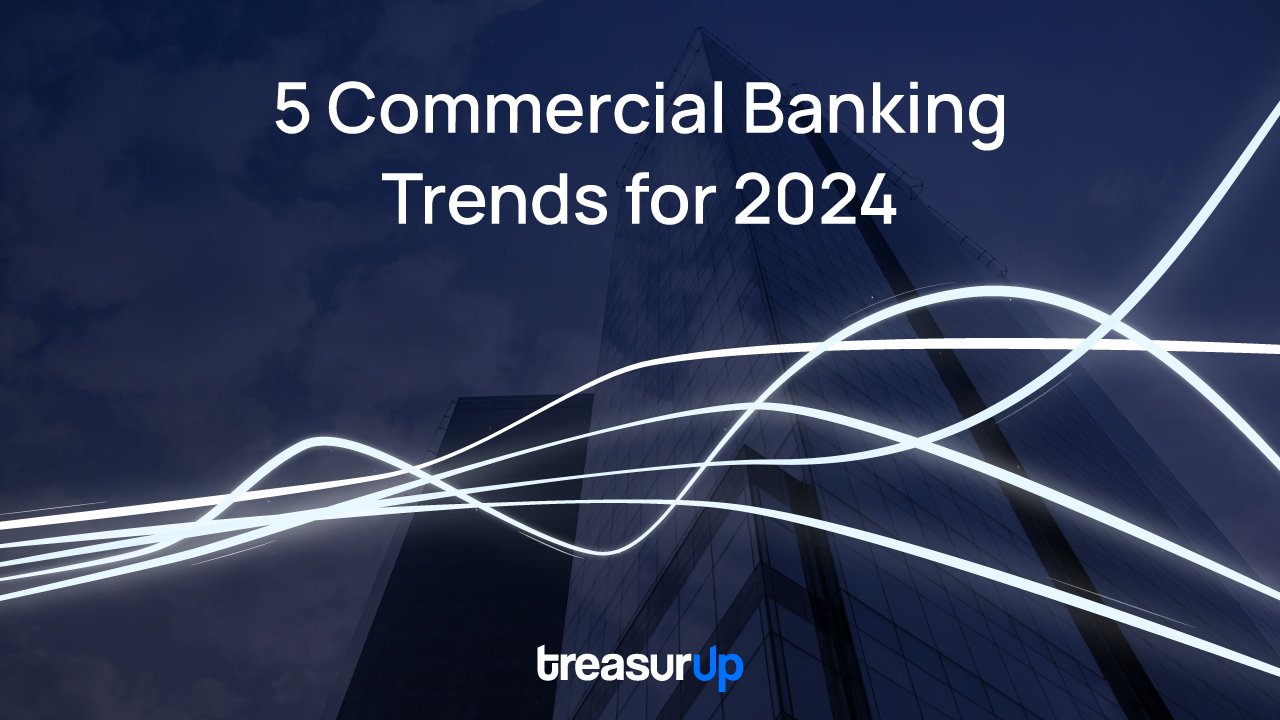

The Christmas tree has been removed and slowly the decorative lights are disappearing from the gardens. The new year has really begun.
Many banks have started their booking year and most of them will see a few, rather new trends becoming rapidly important in 2024.

AI is not new. It started to become relevant already a few years ago in the areas of fraud detection, pricing and trading strategies and credit analysis of large loan portfolios. The Machine Learning data analysis and anomaly detection cases are now rapidly being enriched with use cases on the company client side.
Deep Learning models can help in analyzing a company’s financial performance against market developments and can be applied in advanced forecasting and liquidity management.
Natural Language Processing is increasingly being used in business chatbots for support and advisory services and can also be used in tailored contract generation and business intelligence reports for example.
TreasurUp sees the following use cases for Commercial Banking as the most important ones at this stage:
One of the most important challenges that TreasurUp identifies with regard to proper implementations of AI is the avoidance of black boxes. Users need to be able to see how analyses have been made and what is authentic and what not in anything a front-end shows them.
Banks are rapidly introducing both internal and external measures to contribute to a more sustainable world. With their balance sheets banks can have a lot of impact. Besides stricter policies around employee traveling, leasing cars and building management, clients have seen special commercial terms for loans in case they meet certain ESG criteria from the bank.
On the investment side products like green bonds and green investment profiles have emerged. Banks are now moving into the next phase of accelerated sustainability impact initiatives which is not an easy task.
These initiatives include:
Just like many corporate businesses, banks no longer have to build every new product in Retail, Commercial, Large Corporate and Institutional banking themselves. During the last two decades or so banks either set up new product areas themselves with all new people, platforms and processes related to that.
Lately, not only external product providers like asset management/brokerage cross border payments and card service companies can insource their products but also propositions that include the full stack, meaning product, people, platforms, portal integration, back office services, support and even external balance sheets. This allows banks to efficiently add new products and services if integrated properly. It also means that smaller banks have more opportunities to be more competitive in certain areas.
With rising interest rates banks have to compensate companies that want to monetize their excess cash even though they might not always prefer that route based on the balance sheet funding criteria of the bank. Many banks have switched off the (online) FX deposits and are now reopening them. Other products like bonds, Exchange Traded Funds (ETFs), Money Market Funds and ordinary savings accounts all see rapid growth in terms of demand. This re-opens a front-office activity for Commercial Banking in terms of relationship management, consultancy and execution.
Within the Commercial Banking area there is a lot of upside potential when it comes to educating small and mid corporates on improving their liquidity management and cash optimization strategies. Multinational corporations typically have robust processes and tooling as well as knowledge in place to manage liquidity. Therefore, most time is spent on optimization strategies.
Banks could play a role in providing smaller companies with automated tooling that does exactly that but in a much easier way. This could make cash optimisation a much more important topic in client meetings and a client’s day-to-day operations.
Many banks face staggering investments for upgrading their payment infrastructures or have recently started or completed these. These mainly have to do with facilitating instant payments, pre-validations and ISO2022 compliance. It may sound a bit overdone, but these could just be regarded as hygiene factors because at some point, banks just need to offer these services for competitive and regulatory purposes. What is interesting to point out are the vast opportunities that these large infrastructure renewals could mean for the products and services offered to Commercial Banking clients. Host-to-host connections make way for APIs; clients expect the beneficiary pre-validation to be in place and even better: clear payment tracking.
In order to remain relevant in the vast market of cross-border payments with many (large) new players with attractive offerings, banks need to at least be transparent on currency conversions before a payment submission and ideally include a wide range of frontier currencies and settlement options that can be offered to internationally active company clients.
Banks can and should create a context whereby mid-corporates do not have a reason to move certain payment flows to external parties. Multinational corporations have so-called ‘payment-hub’ functionalities embedded in their finance infrastructure which allows them to route different payments to many beneficiaries around the world to the optimal channel based on criteria such as payment formatting, pricing, clearing, settlement and approval steps. Banks could play a bigger role in offering mid-corporates similar smart routing options that optimize payments in a similar way whilst keeping them within the circle of the bank.
In short: 2024 is going to be a truly interesting year for Commercial Banking in terms of new strategic developments. TreasurUp is ready to contribute.
Niels van Daatselaar, Co-founder and CEO of TreasurUp, brings over two decades of transformative experience in online Commercial Banking. With a track record of reshaping banking propositions and pioneering white-labeled online services for risk and liquidity management.
Discover the online treasury management solutions that TreasurUp offers to banks and their business clients on a global scale and request a demo here.

Stay “TreasurUpdated” on the latest in online Commercial Banking, and subscribe to our monthly LinkedIn Newsletter.